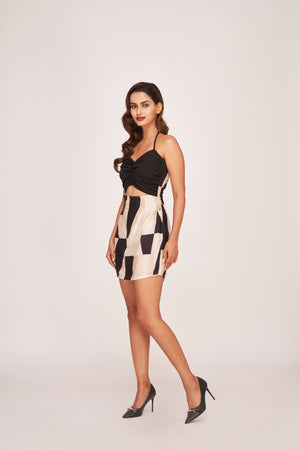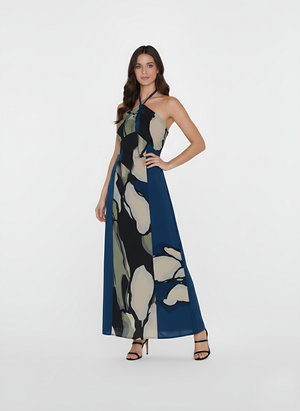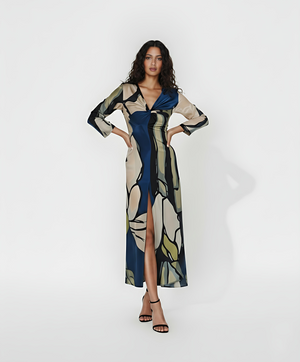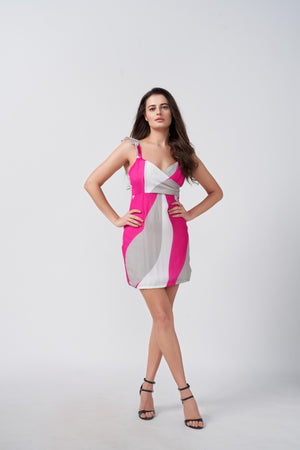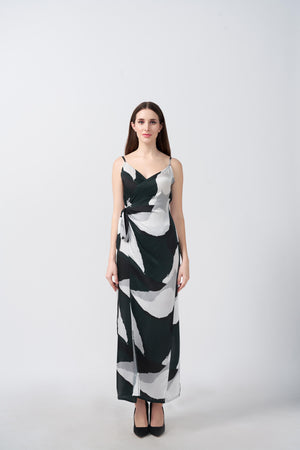Ever pulled on what looked like the perfect summer dress, only to step into the sunlight and realise it’s terribly see‑through? Yeah, we’ve had that happen too. That gossamer look that’s so delightful in the shop or on the hanger can feel like a bit of a trap when you’re out and about. The reason is simple, sheer materials are purposely designed to let light, and frankly, you as well, peek through.
At their heart, sheer fabrics are made from very fine threads and loose weaves, whether natural fibres like silk, cotton, linen, or synthetics such as polyester or nylon. Their lightweight structure keeps you cool on hot summer days, but conversely, gives them minimal opacity. When light passes through easily, the naked eye can distinguish whatever’s underneath, which is why what feels airy in the changing room might feel revealing in full daylight.
What Fabrics Are Sheer—and What Exactly Is the Sheer Fabric Called?
Let’s understand and know about the types of fabrics that are typically sheer. You might already be familiar with a few of them, like chiffon, organza, and voile. But there are many more.
Chiffon is perhaps the most classic “sheer summer dress” fabric. It flows well and is elegant; it also has textures sometimes and is often made of silk or synthetics. It’s notoriously translucent, almost like a fine net due to its loosely interlaced threads.
Then there’s organza, which is crisp and structured, usually silk or polyester, that gives structure as well as transparency. Voile, often cotton or cotton-blend, is soft, flowing, and delightfully sheer and breathable. Then there is also Georgette, which is similarly lightweight and has a slightly crinkled texture, semi-sheer too. Gauze, lace, muslin, and more all contribute to the sheer wardrobe. Some have open, net-like weaves; others rely on fine thread density.
In short, the “sheer fabric” on your dress could be chiffon, voile, organza, georgette, lace, tulle, and more. What they share is lightness and transparency.
What’s the Difference Between Chiffon and Other Sheer Fabrics?
If chiffon is the one you’re most puzzled about, here’s the breakdown for it in simple terms. Chiffon is a lightweight, sheer plain weave made with crepe-twist yarns. These twisted threads create its characteristic puckered texture and make it delicate yet slightly stretchy. Historically, it was silk and expensive; now it’s often polyester or nylon, making it more accessible.
Other sheer fabrics differ largely in feel and structure. Organza is formal, crisp and holds form well; voile is soft and breathable; lace is openwork and decorative; tulle is net-like and used for volume; georgette is fluid, with a matte, crinkled drape. So while chiffon offers elegant drape and subtle movement, other fabrics bring stiffness, structure or ornamentation, each delivering a distinct kind of transparency.
How to Fix a Dress That’s Too Sheer (or Make It More Modest)
It is not uncommon to hear about sheer clothing working as a wardrobe malfunction waiting to happen. Fortunately, there are several ways to give your beach‑to‑brunch dress a bit more modesty without compromising style.
One of the easiest solutions? Wear a slip or nude undergarments in your skin tone. A full or half slip, camisole, or strapless bodysuit can dramatically reduce visibility, especially if the colour matches your skin. Seamless underwear helps minimise distracting lines.
If you’re feeling crafty, you might add a lining to your dress, either fully or in key areas such as the bodice or skirt. Choose a fabric that mimics the dress’s fit and tone; it can feel bespoke yet practical.
Layering works wonders, too. Pop on a neutral camisole or tank top underneath, or wear a cropped jacket, blazer or cardigan over the dress to tone down its transparency while still letting the sheer fabric speak.
Other smart fixes include stick-on bras or nipple covers for tricky necklines, high-waisted shapewear for smooth coverage, or even strategically placed accessories (like belts or scarves) to draw focus away from sheer areas.
What Do I Wear Under a Sheer Dress? How to Hide a Bra Under a Sheer Dress?
When in doubt, match your underlayers to your skin tone; that’s the golden rule. Nude seamless bras or bodysuits reduce visibility. For lace or crochet dresses, slip skirts or matching bralettes and high-waisted briefs can be both stylish and functional.
If your dress has a low back or intricate designs, just wear a stick-on bra or nipple covers; they do the job while staying invisible.
If you prefer continuity, a slip dress that follows the outline of your sheer overlay is subtle, chic, and totally acceptable for everyday wear. Layering with camisoles or underdresses tailored to your skin tone ensures seamless coverage.
Final Thoughts
Sheer summer dresses feel too transparent for good reason: they’re made of fine threads in open weaves, designed to be airy and dreamy, not fully opaque. Fabrics like chiffon, organza, voile, and tulle offer different textures, flows, and levels of show‑through. But when it comes to fashion, it is all about flexibility. If you want to wear that floaty chiffon beauty out and about without feeling exposed, all you need are smart underlayers, modesty-enhancing tweaks, or layering tricks.
Whether it’s a matching slip, a nude bodysuit, a lovely camisole, or a chic overlay, you can transform any sheer piece from lingerie-adjacent to perfectly everyday. And that’s the kind of confidence every summer wardrobe deserves.
